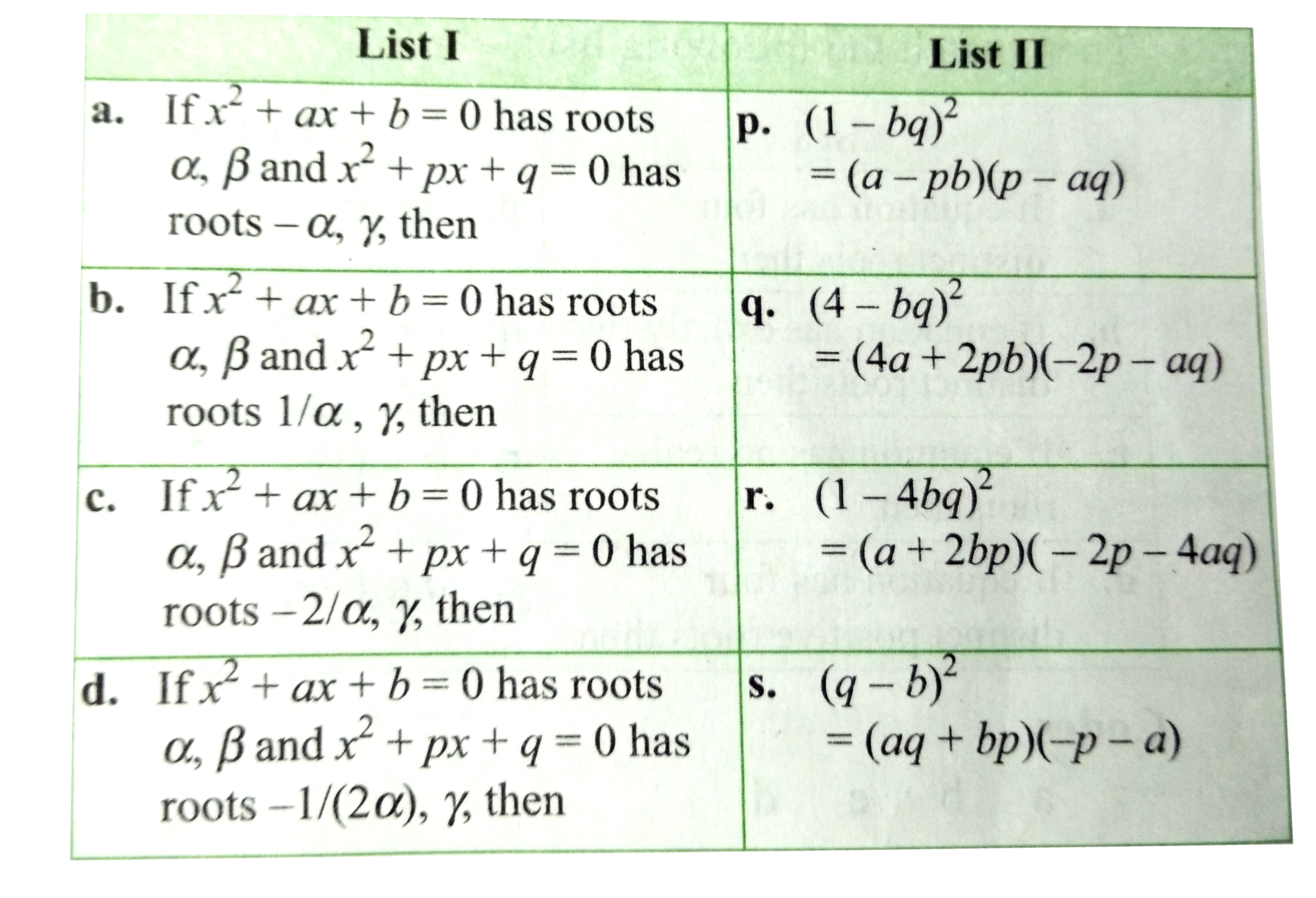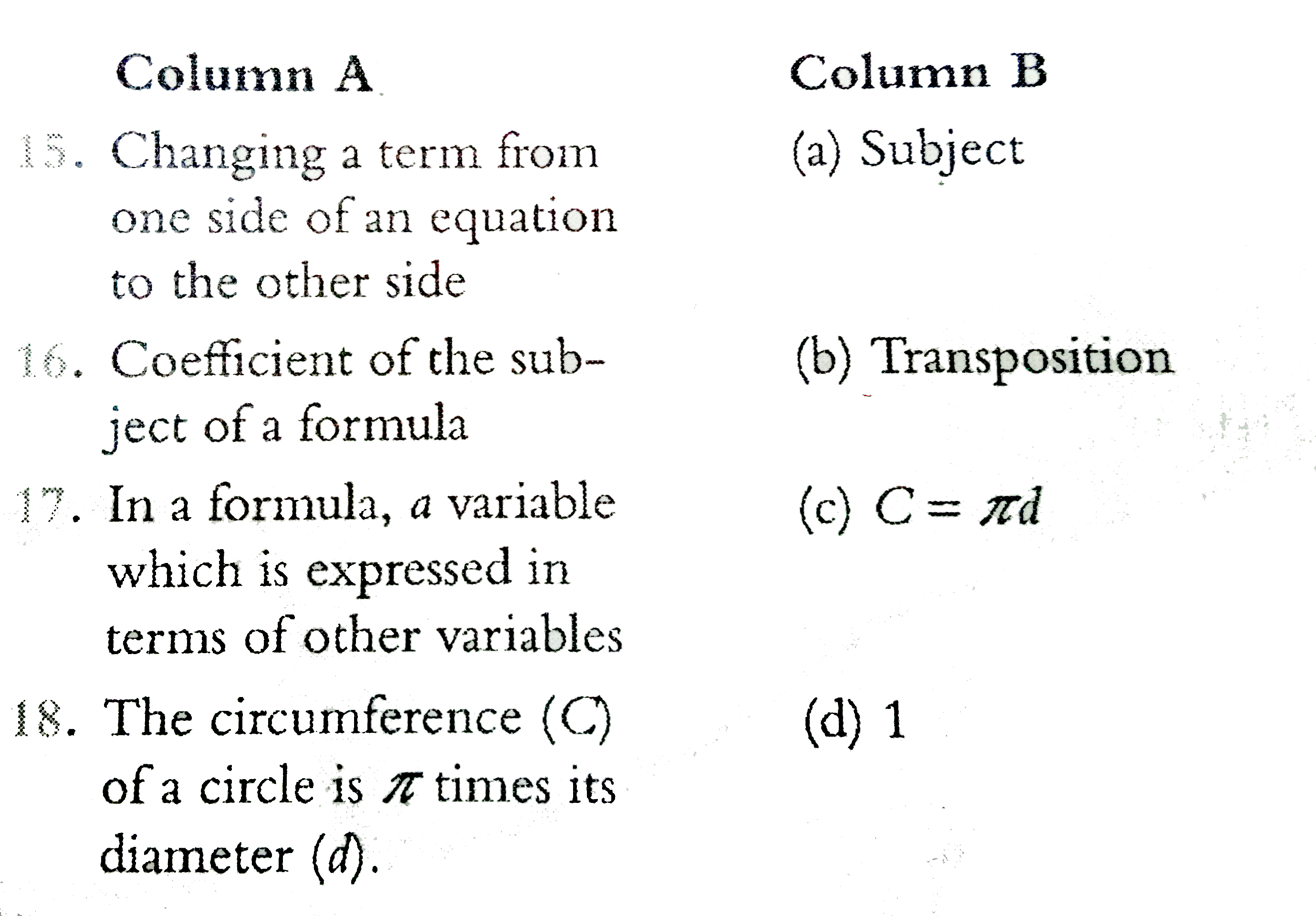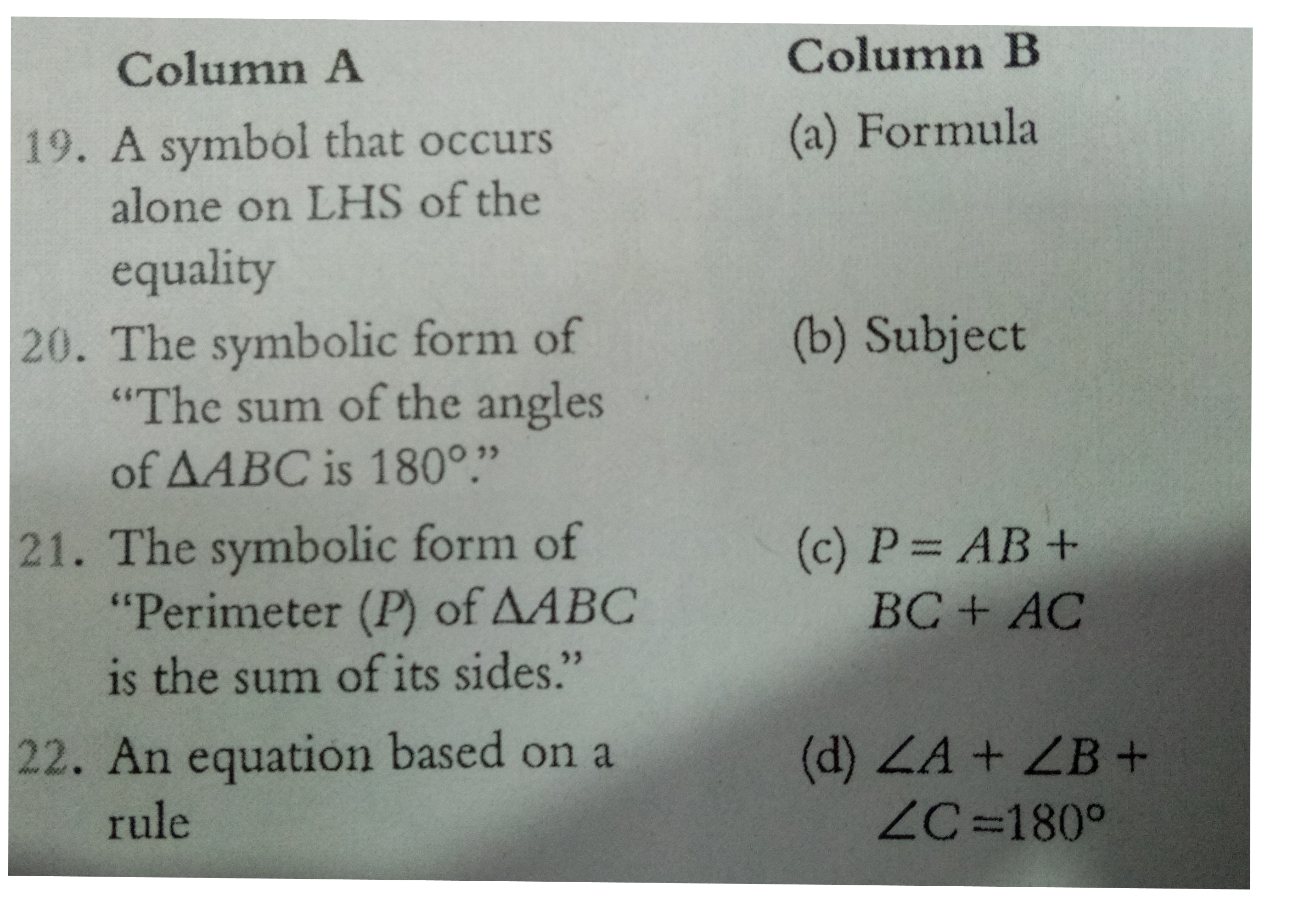Match the following lists:

The correct Answer is:a→s;b→p;c→q;d→r
a→s,b→p,c→q,d→r
(a) x2ax+b=0 has root lapha. Hence.
α2+aα+b=0 (1)
x2+px+q=0 has root −α. Hence,
α2−pα+q= (2)
Eliminating α from (1) and (2), we get
(q−b)2=(aq+bp)(−p−a)
or (q−b)2=−(aq+pb)(p+a)
(b) x2ax+b=0 has root α. Hence,
α2+aα+b=0 (1)
x2+px+q=0 has root 1/α. Hence,
qα2+pα+1=0 (2)
Eliminating α from (1) and (2), we get
(1−bq)2=(a−pb)(p−aq)
(c) x2+ax+b=0 has roots, α,β. Hence,
α2+aα+b=0 (1)
x2+px+q=0 has roots −2/α,γ. Hence,
qα2−2pα+4=0 (2)
Eliminating α from (1) and (2), we et
(4−bq)2=(4a+2pb)(−2p−aq)
(d) x2+ax+b=0 has roots α,β. Hence,
α2+aα+b=0 (1)
x2+px+q=0 has roots −1/2α,γ. Hence,
4qα2−2pα+1=0 (2)
Elimintaing α from (1) and (2), we get
(1−4bq)2=(a+2bp)(−2p−4aq)
Topper's Solved these Questions
- THEORY OF EQUATIONSBook:CENGAGEChapter:THEORY OF EQUATIONSExercise:Exercise (Numerical)
Explore 43 Videos
- THEORY OF EQUATIONSBook:CENGAGEChapter:THEORY OF EQUATIONSExercise:JEE Main Previous Year
Explore 7 Videos
- THEORY OF EQUATIONSBook:CENGAGEChapter:THEORY OF EQUATIONSExercise:Exercise (Comprehension)
Explore 37 Videos
- STRAIGHT LINESBook:CENGAGEChapter:STRAIGHT LINESExercise:JEE Advanced Previous Year
Explore 4 Videos
- THREE DIMENSIONAL GEOMETRYBook:CENGAGEChapter:THREE DIMENSIONAL GEOMETRYExercise:Question Bank
Explore 20 Videos
Similar Questions
If x=2+223+213, then the value of x3−6x2+6x is:
View SolutionIf the roots of the equation bx2+cx+a=0 be imaginary, then for all real values of x, the expression 3b2x2+6bcx+2c2 is (1) greater than 4ab (2) less than 4ab (3) greater than 4ab (4) less than 4ab
View SolutionConsider an unknow polynomial which divided by (x−3) and (x−4) leaves remainder 2 and 1, respectively. Let R(x) be the remainder when this polynomial is divided by (x−3)(x−4).
If equations R(x)=x2+ax+1 has two distint real roots, then exhaustive values of a are.
View SolutionThe locus of the orthocentre of the triangle formed by the lines (1+p)x−py+p(1+p)=0,(1+q)x−qy+q(1+q)=0 and y = 0, where p≠⋅q, is (A) a hyperbola (B) a parabola (C) an ellipse (D) a straight line
View SolutionLet the line L1:x−12=y−23=z−34 and L2:x−21=y−32=z−k4 intersect at P.The least distance of P from the plane 3x−4y−12z+4=0, equals
View SolutionMatch the following lists:

View SolutionWhich of the following are correct chain isomers of butane ? (i)
View SolutionDetermine the point of symmetry of a regular hexagon.
View SolutionDtermine the images of the following figure about the given line :
View SolutionMatch the following Column A to Column B

View SolutionMatch the following Column A to Column B

View SolutionMatch the following Column A to Column B

View SolutionThe inequation represented by the graph given below is :
View SolutionThe inequation that best describes the graph given below is _________
View SolutionThe inequation that best describes the following graph is _________
View SolutionMatch the followings (column I with column II)
ltimg src="https://d10lpgp6xz60nq.cloudfront.net/physics_images/NCERT_BIO_XI_C03_E01_011_Q01.png" width="80%"gt
View Solution

